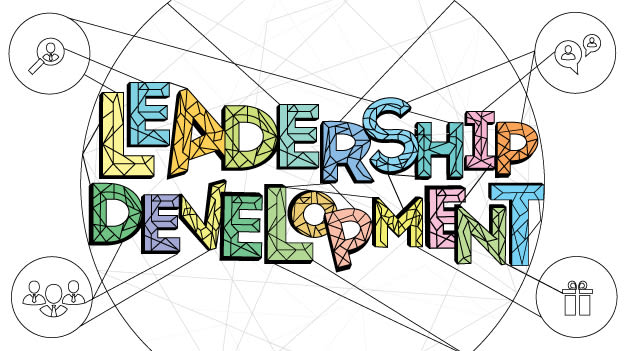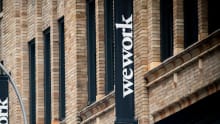Leading on the edge

Many people enter leadership development programs seeking a quick fix. Developing leaders can’t happen overnight
For the company to be able to provide guidance and advice on how to develop one’s career path set in a realistic timeline, it should be able to understand what they are striving for
US companies spent almost $14 billion annually on leadership development, up from the previous years1. This year, leadership development is claiming a chunk of the learning & development budgets of companies: At least 35 per cent of the overall L&D budgets2. While increased budgetary allocation to the learning and development function, under which leadership development would come does not necessarily mean that the company would develop great leaders. If that were the case, then majority of the companies would never have problems finding a good leader.
Companies today are struggling to improve their leadership skills; more than 60 per cent of all companies cite “leadership gaps” as their top business challenge. This despite spending on the leadership development budget cascading down the leadership chain. According to a Bersin By Deloitte report, senior leaders only consumed 22 per cent of the leadership development budget as companies are now focusing their efforts to develop all levels of leaders, especially high-potential talent, to remain competitive.
Majority of the leadership development programs fail due to various reasons. In our conversations with various experts, we narrowed down five areas where businesses get it wrong. They are:
Leadership development is seen as a quick fix solution
Many people enter leadership development programs seeking a quick fix. Although many (including those who undertake leadership development programs) are impatient for results, quick fix solutions put unrealistic expectations on everyone. Developing leaders can’t happen overnight. It needs to be seen as a continuous process rather than being bracketed into long-term or short-term initiatives. Amit Gautam, Director and Co-founder, Upside Learning says, “There is no point in looking for a leader when you need one because by then the battle has already been lost. The key will be to identify, develop and have a strong pipeline of ready leaders and do it continuously.” However, building an internal leadership pipeline can only be effective provided the efforts are focused towards the right set of people.
The idea of not treating leadership development as a quick fix solution should come from within and should be an innate part of the organization’s culture. Senior leaders of the organization need to create an open culture of learning where people have the freedom to experiment, to work in their own ways to generate desired outcomes and even outperform themselves at each level. This kind of a workplace culture floats from top to the bottom. Naresh Purushotham, CEO and Co-founder, Crestpoint Consultants Pvt Ltd, says, “The senior leadership in an organization needs to be committed to building a culture of leadership. They need to walk the talk, be dedicated mentors or coaches and empower people to believe in their leadership capabilities.”
Career mapping not given a priority
Many times employers fail to provide a career roadmap to their employees. With changing demographics of the workforce and global MNCs in operation, it is critical that organizations create clearly defined career paths for high performing employees. Many HiPos get restless when they feel like they have hit a ceiling in terms of their career development or opportunities within the organization.
Ashish Arora, Founder and Managing Director of HR Anexi says, “Organizations must focus on building a sustainable leadership pipeline by holistically developing their personnel by assessing their personality, identifying their developmental areas, putting them through a sustainable customized program and preparing them to lead.” A career map aligned to the employee’s potential and growth chart comes handy in designing the best-fit training and feedback plan.
For the company to be able to provide guidance and advice on how to develop one’s career path set in a realistic timeline, it should be able to understand what they are striving for. The question—“How do you view your future at our firm”—is something that they should mandatorily ask.
Finding & assessing the right leaders
Specific trainings and reviews make a critical part of leadership development. However, organizations should not confuse these with being the complete measures in itself. Leadership development requires dedicated learning, graded reinforcements and practical exposure with a well-planned strategic approach. Trainings should not be viewed as quick-fix measures to groom people after they are promoted to leadership roles. Sanjay Dugar, Director and Principal Consultant at C2C Consulting & Training Pvt. Ltd., says, “Some organizations rely on competency frameworks to build capabilities and assess performances. They use competency scores and observations as references for understanding one’s readiness for the future roles. Such competency models are being increasingly leveraged by relatively more mature organizations.”
For enabling leadership, the trainings need to be mapped with the competency requirements of an employee with that of the business requirements. “It is important to also understand the challenges leaders at all levels face in staying true to their personal convictions, acting swiftly in times of uncertainty, being accountable for the business – and all the while inspiring others to greatness,” says Ashish Arora, Founder and Managing Director of HR Anexi.
Hiring for skills, not attitude
According to a recent study by Leadership IQ, 46 per cent of newly hired employees will fail within 18 months, while only 19 per cent will achieve unequivocal success. Technical skills are not the primary reason why new hires fail; instead, poor interpersonal skills dominate the list, flaws which many of their managers admit were overlooked during the interview process. Leadership IQ provides employee surveys, leadership training, and e-learning to business and healthcare organizations.
While hiring a candidate, be it at any level, organizations should look at identifying leadership capabilities rather than focusing more only on the operational skills and experience. It’s better to have identified potential capabilities early enough than finding ways to develop it from a scratch later. Leaders need to be involved in the process of hiring to define certain specific competencies that are integral to an organization’s vision and are a requisite at any level. Gautam of Upside Learning says, “While selecting candidates for a role, if organizations define certain values, skills and traits/attributes that become an integral part of the hiring process for all roles and levels and ensure every employee who comes on board has all these basic qualities to an extent, organizations can identify leadership talent early on.”
No time for introspection
The onus of identifying the right set of leaders is with the organization, but they fail to gather intelligence on why their leadership program fails to work. Too often businesses fail to measure and track changes in leadership performance over time, increasing the odds of such initiatives not being taken seriously. Arora says, “One of our key beliefs to effective leadership development is to help the senior team practice discussing ‘undiscussables’ — the issues that no one wants to talk and are impeding the team’s effectiveness — and guide agreement on how the leaders will hold each other accountable for productive behaviour in the future.”
According to a McKinsey article3, “any evaluation of leadership development begins and ends with participant feedback; the danger here is that trainers learn to game the system and deliver a syllabus that is more pleasing than challenging to participants. Yet targets can be set and their achievement monitored. Just as in any business-performance program, once that assessment is complete, leaders can learn from successes and failures over time and make the necessary adjustments”. One of the best ways to ensure that a leader develops constantly is to continuously give feedback and this is when the 360-degree feedback comes into play. Unless an organization or a leader self-introspects, there would be no hope for improvement.
In conclusion, leaders do not emerge instantly or as a result of some disconnected training or development program. Organizations need to integrate leadership development into each and every aspect of their functioning in order to nurture true leaders within the system. It is about finding people who have it in them, reinforcing the faith in their abilities and empowering them to prove their worth. For Dr. Lance Secretan, the widely acknowledged leadership expert said, “Great leadership is about human experiences. It’s not a formula or a program, it is a human activity that comes from the heart and considers the hearts of others. It is an attitude, not a routine.”
Acknowledgements
- Laci Loew and Karen O’Leonard, Leadership Development Factbook 2012: Benchmarks and Trends in U.S. Leadership Development, Bersin by Deloitte, July 2012, bersin.com
- The Corporate Learning Factbook 2014: Benchmarks, Trends, and Analysis of the U.S. Training Market’ from Bersin by Deloitte
- http://www.mckinsey.com/insights/leading_in_the_21st_century/why_leadership-development_programs_fail











